Research on running economy presents a fresh take on which foot strike, forefoot strike or heel strike, is more efficient whereby further analysis revealed that forefoot running saves more energy on account of more gravitational acceleration that results in more efficient forward momentum with less mechanical energy.
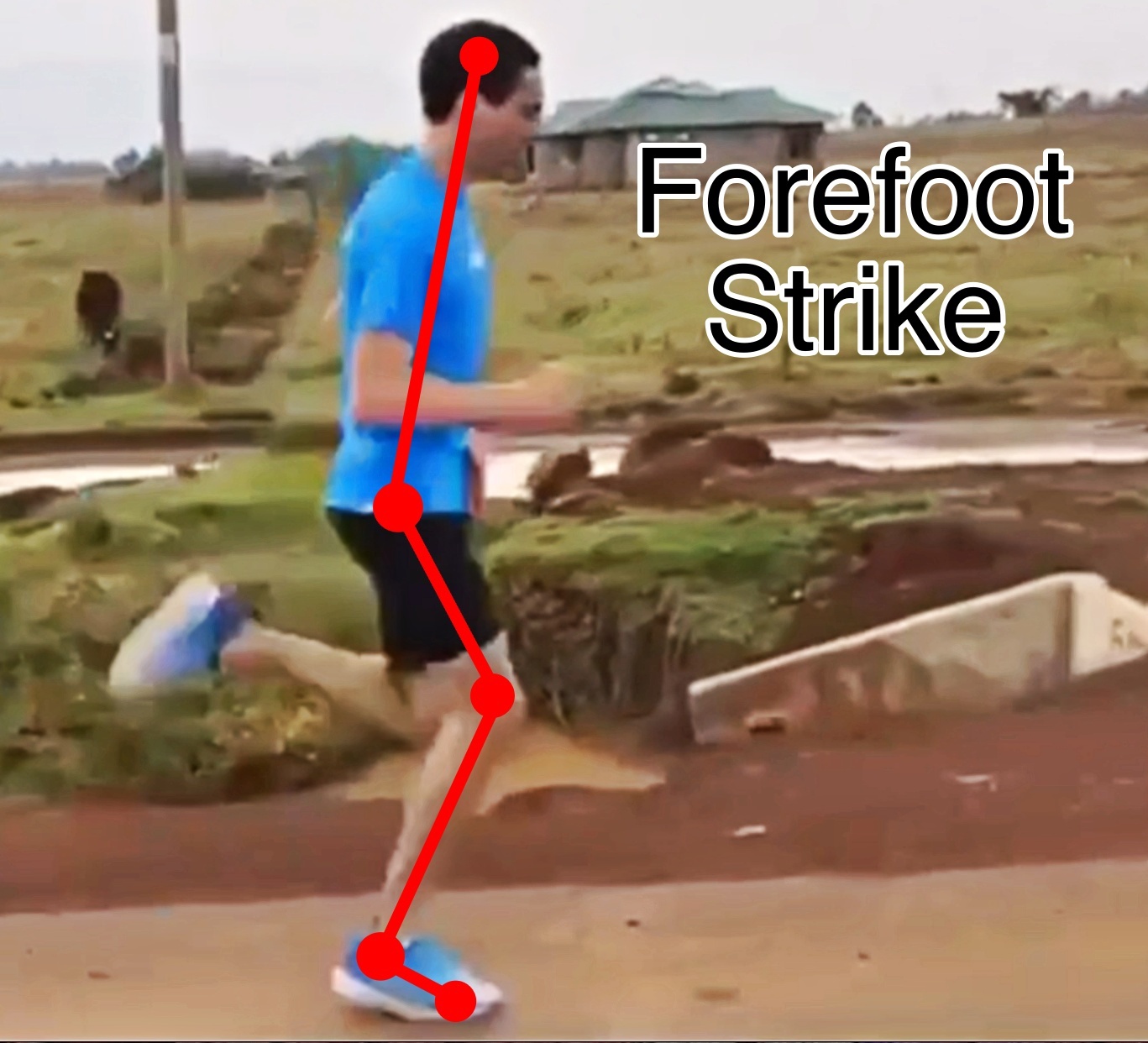
Gravitational acceleration means an object is falling because gravity is pulling it down towards the ground, therefore the object does not expend energy to fall. Researchers also learned that more muscle energy is freed up in forefoot running because it naturally increases gravitational acceleration by improving upper body posture, while preventing an over-stride. These are mechanical outputs that compliments, not goes against, gravitational acceleration.
In contrast, the mechanical components of heel strike running resists gravity, which results in more muscle demands, and therefore, more muscle energy, to counter the force of gravity. Specifically, more propulsive muscle force is needed to launch the body up and forward through each step, shown below:
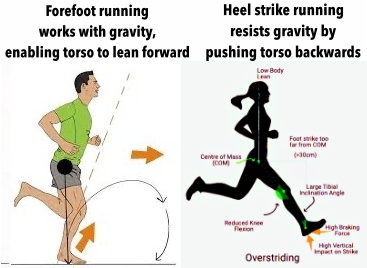
The primary evidence shows that the farther the foot lands away from the heel towards the front of the foot (i.e. the balls of the foot which is a forefoot strike), the more the knee-joint bends and softly flexes, the more this causes the upper body to tilt forward. This whole-body postural arrangement has been identified as a huge economic incentive because it easily leverages more energy, while producing a quiet, more of a low amplitude brake force as compared with heel strike running.
Moreover, the forward lean engaged by forefoot striking allows the body to essentially free-fall, which also allows the foot to release quickly from the ground, pulling up underneath the hips, with less muscular effort.
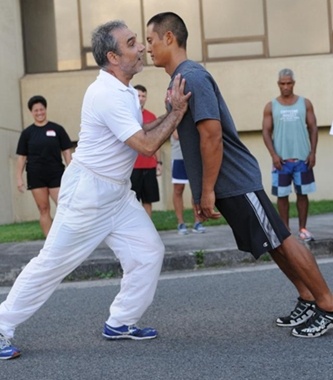
The scale of foot strike type and its involvement in running economy is paramount because forefoot striking when running is a better mechanical energy-saving mechanism than heel striking when running.
The big problems when you heel strike when you run is there’s a larger vertical displacement of the upper body, which means the body bounces higher up and down off the ground, while creating a larger horizontal displacement of the body’s center mass (which is the hips) and your initial foot strike position, all shown below:
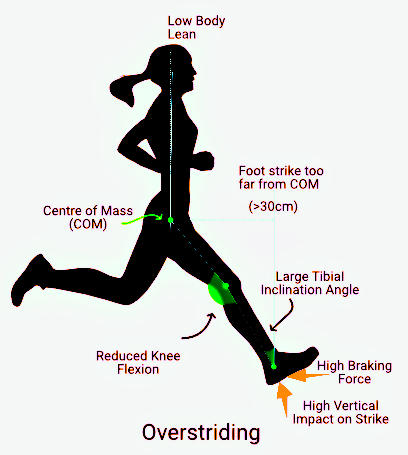

Heel strike running increases energy use via a higher vertical and horizontal displacement of the body’s centre mass, which means for one, the body lifts up too high off the ground at each step, which produces a larger downward force of the body onto the foot at landing. For another, initial foot strike position is too far ahead of the hips, which causes the mass of the body to abruptly collide for too long with the stance leg. In simple terms, heel strike runners can’t ‘free-fall’ forward because they engage longer, lunge-like steps that cause too much stop-and-go, which opposes and fights gravitational acceleration.
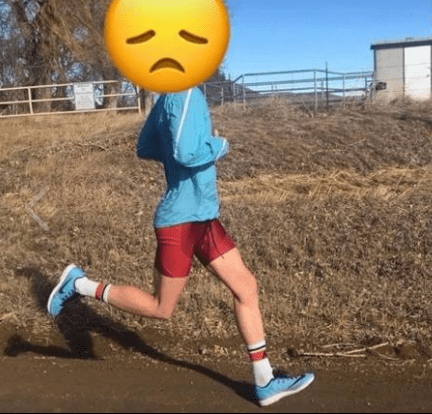

What’s worse, the knee is used too much to help carry the mass of the body up and through the long over-stride. This was found to cause mechanical strain to reach a level of an injury at the knee, while dramatically increasing muscle force generation as well as muscular strain and fatigue, again all due to movements that resist gravity. This is also why ‘runners knee’ and heel strike running go hand-in-hand. Heel striking makes the wrong use of the knee when running, which eventually causes structural damage to the joint. This is never the case in forefoot running. (Read more here on that!)
The Take Home Message
The small change of switching from heel strike to forefoot strike running will make the most positive difference in not just your performance, but injury prevention. Once you land forefoot-first, the rest of your mechanics follows with better positioned upper body and knee-joint angles that reduce energy use, while evening out impact.
Need more convincing that forefoot running is better than heel strike running? Here are all the evidence-based reasons forefoot running is more protective against many negative injurious outcomes linked to heel strike running.
If you’ve enjoyed my post, you’ll LOVE my YouTube channel, here, where I show why and how forefoot running works!

If you’d like, you can support Run Forefoot and help keep it going by making a donation in any amount of your choosing:

Or, you can support Run Forefoot by shopping at the BEST Barefoot Shoe Brands, and be sure to bookmark these links 🙂
Lonowear: https://lonowear.com/?ref=cedsholh
Saguaro: https://www.saguaro.com/?ref=9bVA8fEkmDvB-I
Vibram FiveFingers: https://www.anrdoezrs.net/click-7600968-11372648
Vivobarefoot: https://amzn.to/3vycQOY
Be Lenka: https://www.tkqlhce.com/click-7600968-13947200
Xero Shoes: https://xeroshoes.com/go/Run_Forefoot
Iguaneye: https://www.iguaneye.com/?ref=8tfXVc92
Soft Star Shoes: https://shrsl.com/3mp1b
Wilding Shoes: https://bit.ly/3lIygQP
Bretta Riches
BSc Neurobiology; MSc Biomechanics candidate, ultra minimalist runner & founder of RunForefoot. I was a heel striker, always injured. I was inspired by the great Tirunesh Dibaba to try forefoot running. Now, I'm injury free. This is why I launched Run Forefoot, to advocate the health & performance benefits of forefoot running and to raise awareness on the dangers of heel striking, because the world needs to know.
Latest posts by Bretta Riches (see all)
- Can You Run In Barefoot Shoes? Yes, But DON’T Heel Strike! - 21/07/2024
- Why Cushioned Running Shoes Are Really Bad for Your Feet - 19/07/2024
- Do Cushioned Running Shoes Cause Injuries? - 17/07/2024
